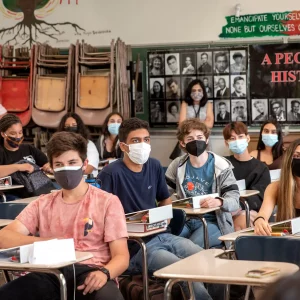
Human lives are rapidly becoming some of the most valuable commodities on the planet. The human trafficking business is reported to be a $32 billion-per-year industry, involving 161 countries including the United States. While this economy is usually known for sex trafficking, a much larger population of 21 million people are in either state- or privately-imposed forced labor.
California, being a border state and having a large immigrant population, is one of the nation’s top four destinations for human trafficking. In California, 43% of all trafficking occurs in the Bay Area and it is at the top of the FBI’s list for child exploitation, along with Los Angeles and San Diego. According to a report by the Little Hoover Commission of California, an estimated 15 percent of the $10 billion worth of state taxes lost each year to the underground economy can be attributed to untaxed illegal activities such as human trafficking.
The problem has been addressed through the passage of various bills in recent years, notably AB1147, which repealed a disastrous state-sponsored regulatory body for massage parlor licensing and prohibited local governments from weeding out these parlors that were hubs of human trafficking. The state also passed SB955, which allows the courts to authorize wiretapping for the investigation or prosecution of human trafficking, SB1165, which allows California public schools to offer prevention education against sex trafficking, and AB1585, which will allow those convicted of prostitution or solicitation offenses to clear their records if they can prove that they were victims of human trafficking.
However, these measures only seem to target sex trafficking. While a report from Attorney General Kamala Harris’ office shows that 56% of cases reported by the nine Anti-Trafficking Task Forces in California fall under sex trafficking, another 23% of cases reported fall under labor trafficking, a number they suspect to be an underestimation due to the under-reporting and under-identification of labor trafficking. U.S. Attorney Wagner states “labor trafficking is often an invisible crime. Our goal is to train government workers, who may be at worksites for other purposes, to see the signs of forced labor and to report it. While federal and state laws exist to combat forced labor, they have no power if no one reports it.”
Many factors contribute to this underestimation, including the fact that immigrant officials may categorize immigrant workers who are trafficked as undocumented workers and deport them. In addition, temporary labor migration or “guest worker” schemes promoted by governments to fill demand for cheap labor often create a legalized system for employers to exploit workers, deny them their rights and increase their vulnerability to trafficking and forced labor, according to the Huffington Post.
Victims of labor trafficking often cannot report their abuse, under threat of deportation or imprisonment. “The traffickers tell them that they have connections with the police, or that the police will beat and imprison or deport them,” said Heidi Rummel, a federal prosecutor of trafficking cases in California. Victims may also feel shame about their situation or they may have no money to pursue legal action because they are either paid very little no or wages at all.
Few legislative actions have been taken to prevent labor trafficking specifically. California Senate Bill 1193, enacted in September 2012, requires businesses, transit hubs, and other locations that are most likely sites of sex and labor trafficking to post notices publicizing human trafficking resource. Assembly Bill 2212 expands red light abatement to include instances of human trafficking.
Forced labor is more prevalent in sectors of the California economy that experience a large demand for cheap labor and have little regulation. This includes the agricultural Central Valley, the textile and clothing manufacturing sweatshops around Los Angeles, and the heavily immigrant-populated San Diego. According to Kay Buck, the CEO and Executive Director of The Coalition to Abolish Slavery & Trafficking (CAST), “while labor trafficking in California does not get the attention it warrants as a serious continuum of exploitation targeting vulnerable populations, it is more prevalent than most people realize. Representing 50% of our cases, victims are sold or tricked into modern slavery in restaurants and food trucks, hotels, in construction or agriculture, and domestic servitude. Children and adults are forced to work under the most horrifying circumstances while the traffickers make enormous profits.”
Even with the laws in place, human trafficking is on the rise in California. For example, the number of sex trafficking cases in Contra Costa County has more than tripled in the last 2 years. In August, a couple from Danville were arrested for running a high-priced prostitution ring, netting thousands of dollars a week. The Bay Area branch of a nationwide FBI investigation dubbed “Cross Country IX” uncovered six children who were forced into prostitution and 8 suspected pimps. There have already been 478 human trafficking cases reported in 2015.




Be First to Comment